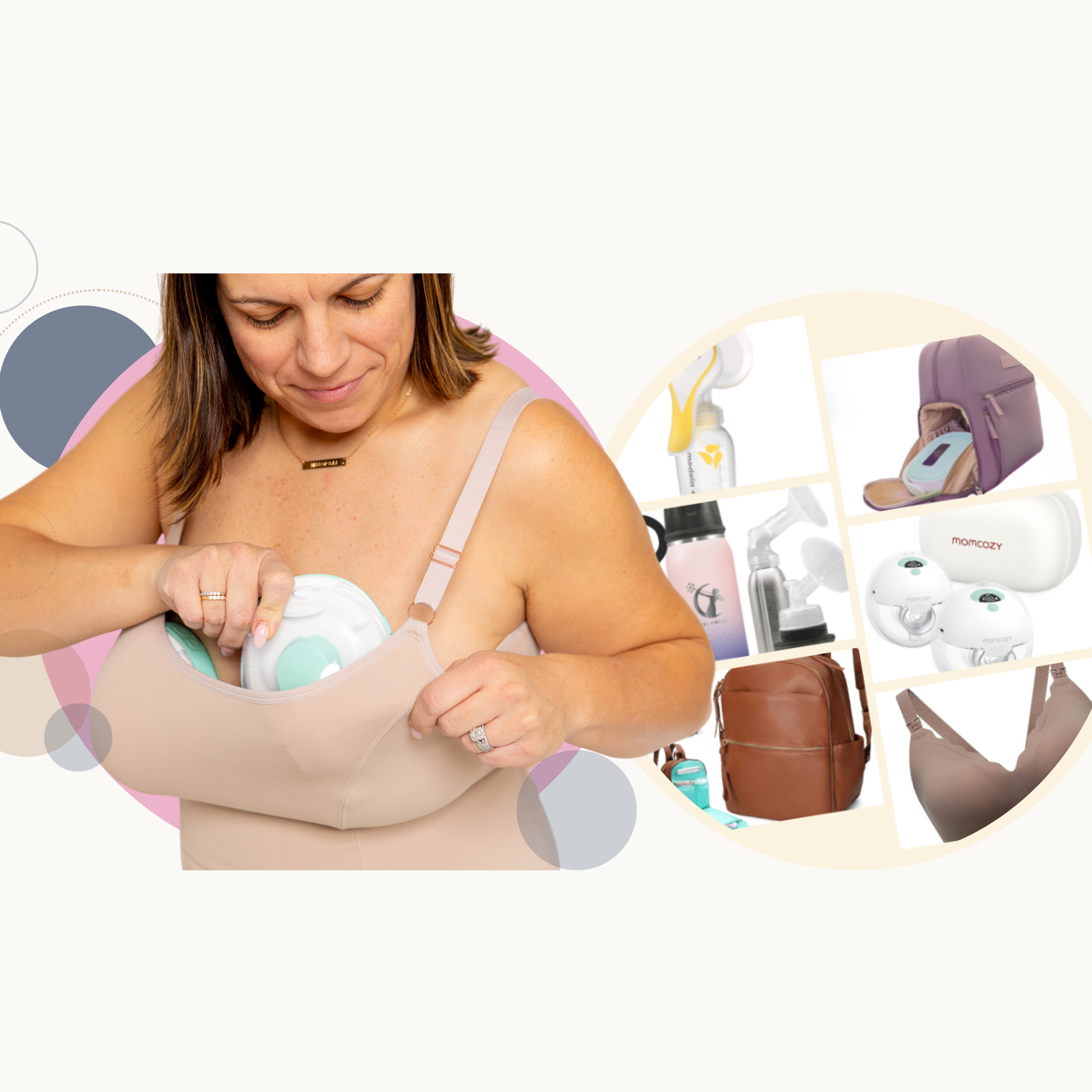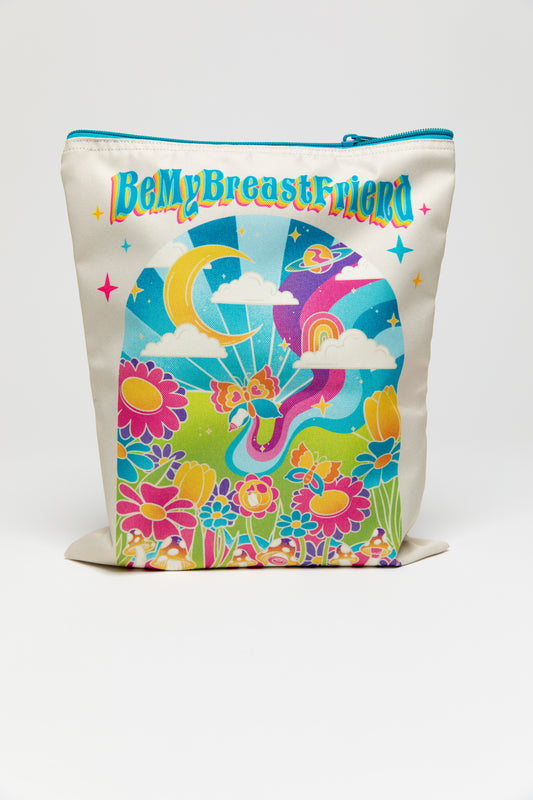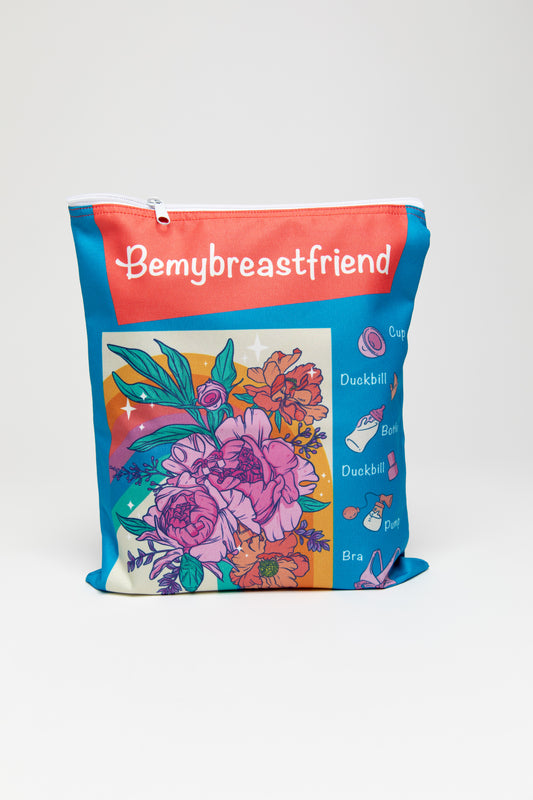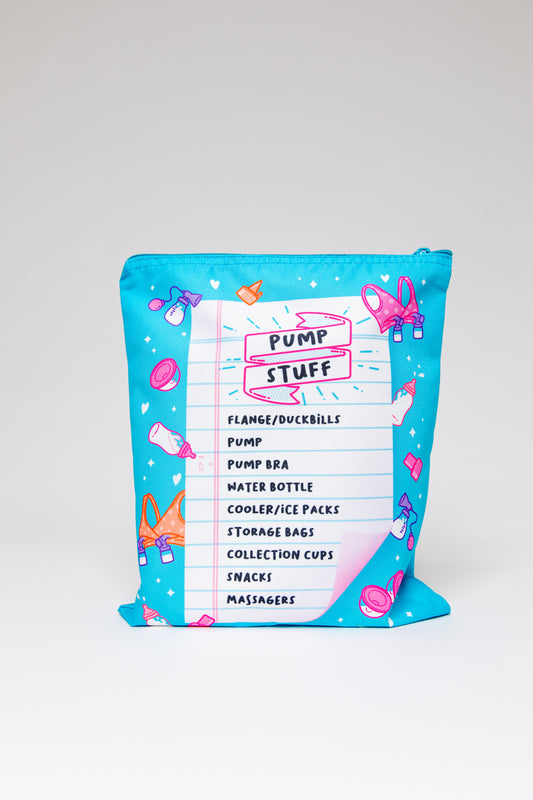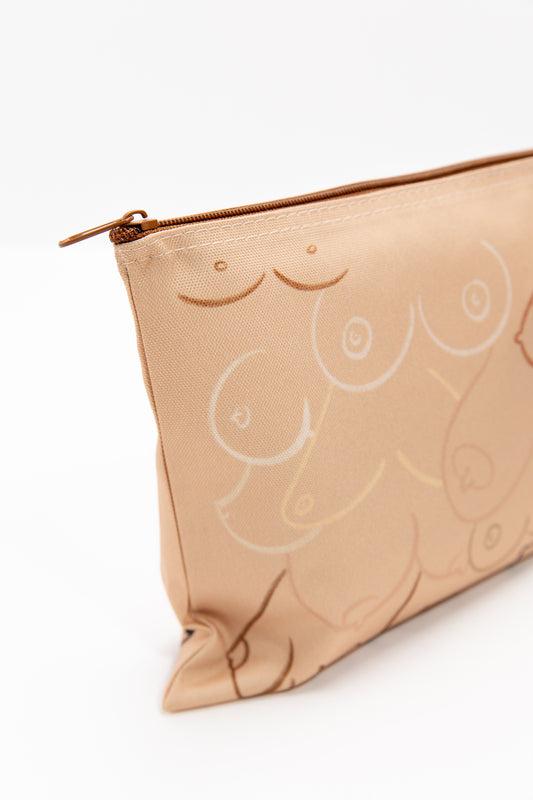
Are you wanting a break from your next nursing session and wondering if it's possible to pass the baby to someone else with a nice fresh bottle of pumped breast milk just this once? Well, I'll be the first to tell you, it's probably not too early. Let’s get real about something that stresses out a lot of new parents: introducing a bottle to a baby who is typically nursing at breast.
You may have heard advice ranging from, “Wait at least three weeks!”, to “Don’t you dare give that baby a bottle until nursing is fully established!" (whatever that means). Maybe you’re going back to work. Maybe your nipples are begging for a break. Maybe you're just feeling touched out. There are lots of reasons, and they're all valid.
As a lactation counselor, exclusive pumper, and nursing mom, I can tell you that waiting until your baby is six weeks of age before introducing a bottle isn’t always the holy grail it’s made out to be. In fact, if you do plan to introduce a bottle at some point, no matter the reason, the early, intentional bottle introduction can actually make things easier for everyone. This blog is all about learning how to do it in a way that keeps your nursing baby happily switching back and forth and keeps your supply going strong.
Let’s get into the real-life guide on when and how to introduce a bottle to a breastfed baby without the guilt or stress.
WHEN Can You Introduce a Bottle?
In the early days, I promise you’re not alone in wondering: When can I start bottle feeding my baby? Some hospital personnel will tell you not to even look at a bottle until breastfeeding is “fully established.” As I see it, that phrase is vague at best. I think I understand the point they are trying to make, but what they should say is that you want to make sure you are working toward fully establishing your breast milk supply even in the midst of introducing a bottle.
*I cannot stress enough - the most important thing in the early months is establishing your milk supply.*
Your body is basically a hormone-driven vending machine: it makes milk based on demand. So, if you skip a nursing session to give baby a bottle (whether it’s already pumped milk, donor milk, or formula), your body doesn’t get the memo to make milk. If you want to maintain a good supply, you’ve got to send the message—ideally by pumping—every single time baby takes a bottle.
So, unfortunately, no - bottle feeding your baby doesn’t get you out of milk duty if you're hoping to exclusively breastfeed (whether via nursing, pumping, or a combination). But, it CAN make things easier. Newborns can nurse for extended amounts of time. On the contrary, pumping takes 20-30 minutes. So, if you decide to pump, then have someone else bottle feed the baby, you DO get a little break! Plus, bottle feeding opens the door for partners, siblings, grandparents, or literally anyone with a functioning arm to help out.
A glimpse into my story - I have pumped in the past while encouraging my milk to come in, and even hand expressed colostrum before my babies were born. I talk more about my feeding journey here and share tips for doing a combination of nursing and pumping in this post.
If you know a bottle is in your future (for work, date nights, or simply when you feel touched out), you don’t need to wait to try it. You can introduce a bottle in the early days as long as you’re also protecting your milk supply by pumping when you’re not nursing.
Here's an example of an evening that incorporates bottle feeding pumped breast milk:
- 3pm - nurse for 45 minutes, this figure may vary on how effective your baby at removing milk
- 5:30pm - pump for 30 minutes
*YOU take a shower, read a book, take a little snooze, and whatever else you want to do from 6-8pm - YES, a TWO HOUR break with NO fear of baby needing to nurse!*
- 6pm - husband feeds baby a bottle of pumped breast milk, AND there may be some leftover to save for later!
- 8pm - nurse before bed!
Here’s what happens when you wait TOO LONG:
Sometimes when you wait the "recommended" 6–8 weeks before introducing a bottle, your baby will act like you have offered them a pacifier dipped in hot sauce. This is bottle refusal. While it's fixable, it can be avoided. To make a smooth transition between breast and bottle, it helps to normalize both from the beginning. I’m not saying you need to do it every other feed, but even one bottle every day or every few days can keep things flexible. It tells your baby, “Hey, this is a thing we do sometimes.”
What you don’t want is to go from full-time breastfeeding to suddenly throwing in an artificial nipple into the mix. The earlier you incorporate different ways of feeding—again, with intention—the more likely your baby is to go back and forth like a pro.
Bottom line?
The best time to introduce a bottle is when it makes sense for you—as long as you’re protecting your milk flow. So go ahead and hand that bottle to your partner, your mom, or whoever else is waiting for their turn to feed that squishy newborn baby. It’s not cheating. It’s just smart.
HOW to Introduce a Bottle
Whether it’s day 3 or week 3, welcome to the land of bottle-feeding equipment, milk flow confusion, paced feeding, and the occasional bottle-hating baby. Let's walk through the how part of when and how to introduce a bottle to a breastfed baby so you’re not stuck googling bottle rejection at 2am tonight.
In the First Few Days: Colostrum Comes First
Before your mature milk comes in, you’re working with liquid gold—colostrum. It’s thick, yellow, and full of immune-boosting goodness. If you’re not directly nursing in those early hours, which can happen for many reasons, you can practice syringe feeding, cup feeding, or an open cup for those small amounts of milk. The hours following birth are vital for telling your body to begin the milk production process, so if nursing is challenging, pumping is a great option to ease your mind about milk production.
Want to know more about collecting colostrum? Check out my blog on antenatal colostrum collection and my Amazon list of colostrum collection tools. You’ll be way ahead of the game if you’ve got a stash ready to go. PLUS a little extra colostrum goes a LONG way if you have an older baby with a cold!
Once Your Milk Comes In: Choose the Right Bottle
Now we’re talking actual bottle feeding. If you Google "baby bottle," you'll get a million results. How in the world will you know which to choose? And with each bottle, there are multiple nipple flow choices! Once you’re ready to use a bottle, the type of bottle nipple you choose can make or break the whole experience.
Use bottles that are specifically designed for optimal oral function. These tend to have:
- A gradual slopped nipple to base, one that passes the "triangle test"
- A slow flow to match natural milk letdown (generally a solid choice for a nursing baby
- Avoid nipple shapes that advertise "close to mom" or "breast like"
Check out my Amazon Storefront for Preferred Bottles—I’ve already done the testing for you.
My absolute favorites:
🍼 Lansinoh Anti-Colic Baby Bottles
🍼 Pigeon Nursing Bottles
Match the Flow to Your Baby
Go slow when it comes to flow, especially if your baby is less than a month old. A slow-flow nipple gives baby more control over their intake and mimics nursing more closely. If your baby is older and nurses lightning-fast, they might be ready for a faster flow. So watch for frustration to tell if the flow of milk isn’t quite right.
Master the Art of Paced Feeding
Paced bottle feeding helps mimic nursing with a bottle so that baby is controlling the feed, not the other way around.
Here’s what it looks like:
- Baby sits slightly upright (not flat on their back) in a position similar to nursing cross-cradle
- Bottle is held horizontally, not tipped vertically, meaning they have to work to get the milk instead of a constant flow with no effort at all
- Let baby draw the nipple in themselves—don’t jam it into their mouth
- Let them take breaks to breathe, just like they would at the breast
This slows down feeding and reduces the risk of difficulty switching back and forth between breast and boob. Your main goal is for your baby to experience as many similarities as possible between nursing and bottle feeding so that minimal challenges arise from feed to feed.
*Pro Tip: Make sure your baby's mouth is positioned similarly to when they are nursing: baby's lips should be flanged outwards, not puckered inward around the tip of the nipple.
Troubleshooting: What If My Older Baby Is Refusing the Bottle?
If your little one is rejecting the bottle, try these tips:
-
Warm the bottle nipple by running it under hot water or placing it in a bowl of warm water
- Offer expressed milk at room temperature instead of cold from the fridge
- Use skin to skin contact during feeds to make it feel familiar and comforting
- Offer the bottle when baby is calm but hungry—such as right before nap time
- Let a family member try (sometimes babies know mom’s boob is nearby and get upset when they can't access it)
- Keep it low pressure. Try multiple times a day to find the sweet spot in your baby’s schedule.
Above all: stay calm. You can always try again another time. Babies feed off our energy. With consistency and patience, most babies will come around.
Clean Bottles = Fewer Germs
If you’re using bottles, cleaning matters. There’s a right way to do it, and if you’re washing everything with the same sponge you use to clean your dinner dishes, I highly recommend checking out my blog on cleaning bottles and pump parts. You don’t need a full-on sanitizing station, but you do need to be thorough—especially during those early months.
Wrapping It Up
Introducing a bottle doesn’t mean abandoning nursing. Stay flexible, follow baby's cues, and don’t panic if your baby doesn't respond well at first. Remember, if you're considering when and how to introduce a bottle to a baby if you still plan to nurse, it's is less about the perfect timeline and more about promoting a good milk supply that meets your baby's needs.
Every baby is different, every mom is different, and those early weeks? They’re pure chaos anyway. The first bottle feeds might feel overwhelming, but once they're behind you and your nursing journey is still continuing flawlessly, you'll probably wonder why you were so concerned in the first place.
The introduction of a bottle isn’t just about convenience—it’s a whole new feeding method that deserves some strategy. Newborn babies are adaptable little creatures, especially when you go slow and stay consistent. Don’t let the fear of “ruining nursing” keep you from creating a rhythm that works for your family. And of course, if something feels off, always seek professional medical advice.

